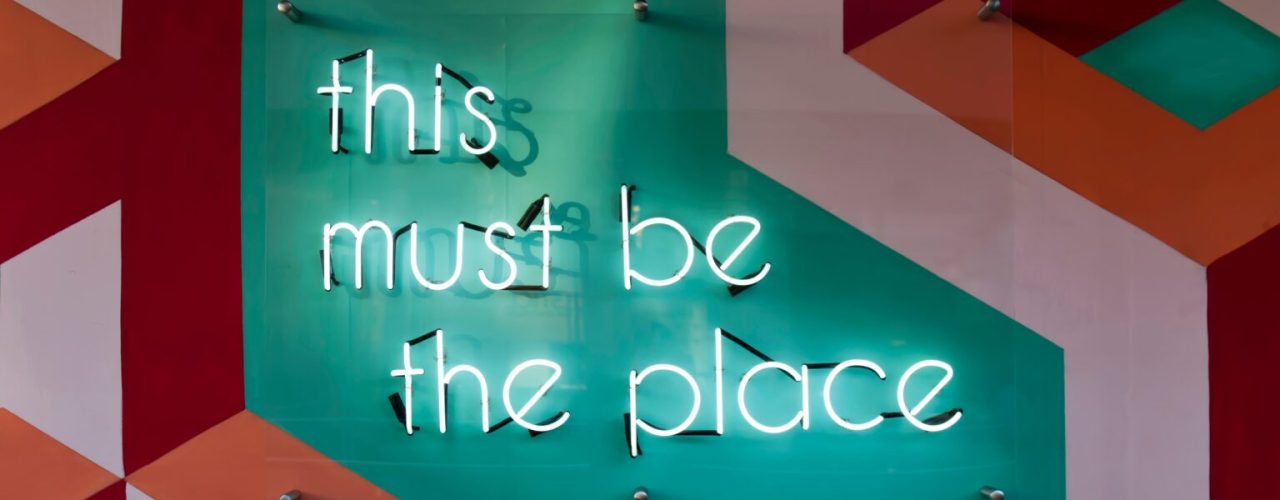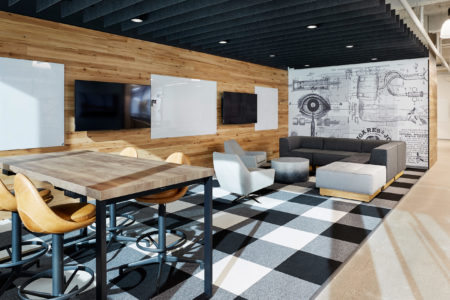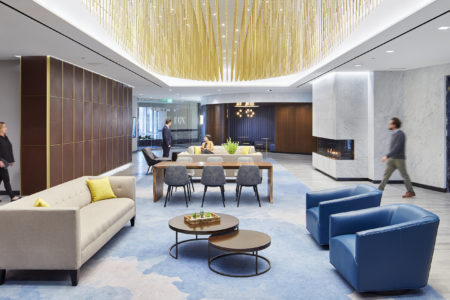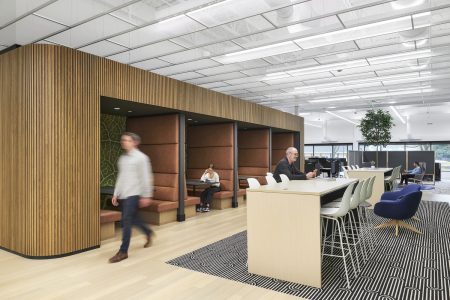Why 2021 Could Be the Year of the Office

Now that many of us have been working from home for the better part of a year, will your employees ever want to come back to the office? RSP’s David Serrano explains why giving your office environment a sense of place and committing to “omni-channel working” makes all the difference.
When most offices locked down last March, and many of us made the best of working from home, we didn’t know how long it would last. In our makeshift home offices, we scratched at productivity and normalcy. Some hung pictures or bought a plant. Others discovered the value of good lighting and lumbar support. As the pandemic wore on, standing desks and the good chairs sold out, along with every office supply imaginable, and our spirits began to flag.
Now that we’re barreling toward widespread vaccination and offices will reopen in the months ahead, it’s time to think about transitioning from that home office to the corporate workplace again.
That’s all well and good, but there’s a catch: most companies won’t be going back to having all employees in the office five days a week. In fact, if workers had their way, about a third of them would never return to the office except on rare occasions. That’s pretty sobering.
A far-flung, distributed workforce might not work for your company or industry, but if your organization wants to keep and attract top talent, chances are you’re going to need a hybrid workplace strategy that accommodates a WFA (work from anywhere) mindset, as well as the type of brick-and-mortar space that makes people want to walk in the door and get stuff done.
PUTTING A “THERE” THERE IN 2021
What that goal comes down to is the importance of place. Of course in the corporate workplace, that takes a lot more than buying some potted plants. It’s about choice, productivity and future growth. It’s about what your company does, your mission and where you want to go. And, in 2021, two of the most important aspects are social currency and what I’ll call “omni-channel working.”
Just as the best-of-the-best retailers embrace omni-channel shopping, the best companies will need to lean into omni-channel working. What does that mean? Brands like REI or Sephora allow customers to switch seamlessly between shopping in-store, online or via app and maintain the same great experience. If you translate that idea to the workplace, it means the best employers must have the technology, flexibility, space and policies in place to make working from different locations seamless. And, if your company wants or needs people to work in-person in the office, there have to be measurable and notable benefits to both employee and employer.

How do we achieve this? Well, design matters, of course, but it goes beyond materials and aesthetics, and maps directly to company culture and business goals. Put another way, the work environment should absolutely align with the organization’s business goals and culture, but it must also offer a compelling reason for workers to be there. The layout, footprint, commitment to collaboration, technology and ease-of-use all contribute to that elusive sense of place and offer workers something they cannot get at home. That kind of hybrid model could very well lead to a new generation of corporate workplaces that completely redefine and reimagine what it means to work in an office.
One approach we’ve been experimenting with is how to infuse a workspace with a hint of personality as a hedge against the creeping homogeneity of today’s environments—one of the great challenges of the open plan is that they all start to look the same after a while. The key, of course, is to take cues from the organization’s brand or corporate identity and send the right message, but we shouldn’t be afraid of an appropriate sense of humor, some quirkiness or even the casual messiness of a comfortable place. An office diner or huddle room is a great opportunity.
THE BIG TAKEAWAY
Resiliency is the goal for every company in 2021 and a company’s offices should help them achieve that goal. Yes, we have to be agile to the changing needs of industries and individual employees. Yes, it is crucial to have the policies and protocols in place that will allow a seamless, omni-channel, “Work from Anywhere” mindset. But rather than leaving corporate offices to languish under the assumption that they won’t see as much traffic in the coming years, giving them a strong sense of place and design aesthetic that jibes with an organization’s culture is going to pave the way for the future of hybrid work and allow companies to continue using their real estate assets as a strategic tool.






